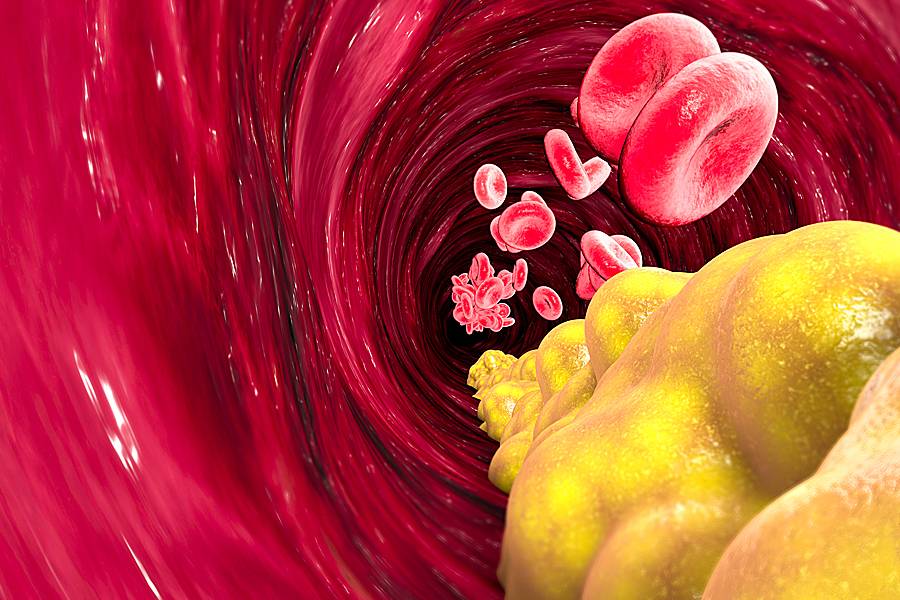This information is provided to Johns Hopkins employees through a partnership with EHP.
Cholesterol is a waxy substance that travels in your blood through the blood vessels. When you have high cholesterol, it can build up along the walls of the blood vessels, making the vessels narrower and decreasing blood flow. You are then at greater risk of having a heart attack or a stroke. Here's what you need to know.
Good and bad cholesterol
Lipids are fats, and blood is mostly water. And because fat and water don't mix, our bodies need lipoproteins—lipids inside a protein shell—to travel through the bloodstream. There are two main kinds of lipoproteins:
LDL, a low-density lipoprotein, is known as "bad cholesterol." It mainly carries cholesterol and delivers it to body cells. Excess LDL cholesterol will build up in artery walls. This increases your risk for heart disease and stroke.
HDL, a high-density lipoprotein, is known as "good cholesterol" because it collects excess cholesterol that LDLs have left behind on blood vessel walls. That's why high levels of HDL cholesterol can decrease your risk of heart disease and stroke.
Controlling cholesterol levels
Total cholesterol includes LDL and HDL cholesterol, as well as other fats in the bloodstream. If your total cholesterol is high, follow the steps below to help lower your total cholesterol level.
Eat less unhealthy fat
Cut back on saturated fats and trans fats (also called hydrogenated fats) by selecting lean cuts of meat, low-fat dairy, and oils instead of solid fats.
Limit baked goods, processed meats, and fried foods. A diet that's high in these fats increases your bad cholesterol. It's not enough to just cut back on foods containing cholesterol.
Eat about two servings of fish per week. Most fish contain omega-3 fatty acids, which help lower blood cholesterol.
Eat more whole grains and soluble fiber, such as oat bran. These foods lower overall cholesterol.
Be active
Choose an activity you enjoy. Walking, swimming, and biking are some good ways to be active.
Start at a level where you feel comfortable. Increase your time and pace a little each week. Work up to 30 to 40 minutes of moderate- to high-intensity physical activity at least three or four days per week.
Remember, some activity is better than none.
If you haven't been exercising regularly, start slowly. Check with your health care provider to make sure the exercise plan is right for you.
Quit smoking
Quitting smoking can improve your lipid levels. It also lowers your risk for heart disease and stroke.
Manage your weight
If you are overweight or obese, your health care provider will work with you to lose weight and lower your BMI (body mass index) to a normal or near-normal level. Making diet changes and increasing physical activity can help.
Take medicine as directed
Many people need medicine to get their LDL levels to a safe level. Medicine to lower cholesterol levels is effective and safe. Your health care provider can tell you whether you might benefit from a cholesterol-lowering medicine. But remember that taking medicine is not a substitute for exercising or watching your diet.
Posted in Health+Well-Being
Tagged hr newswire








